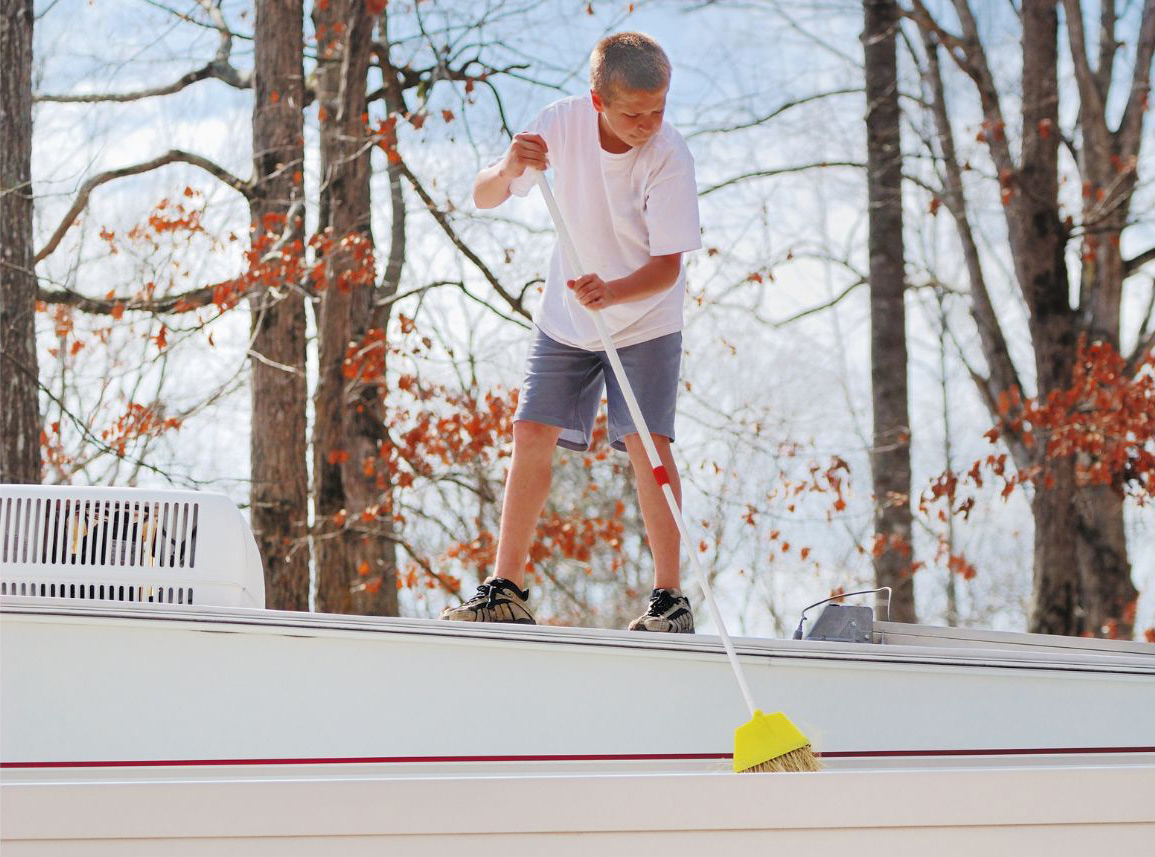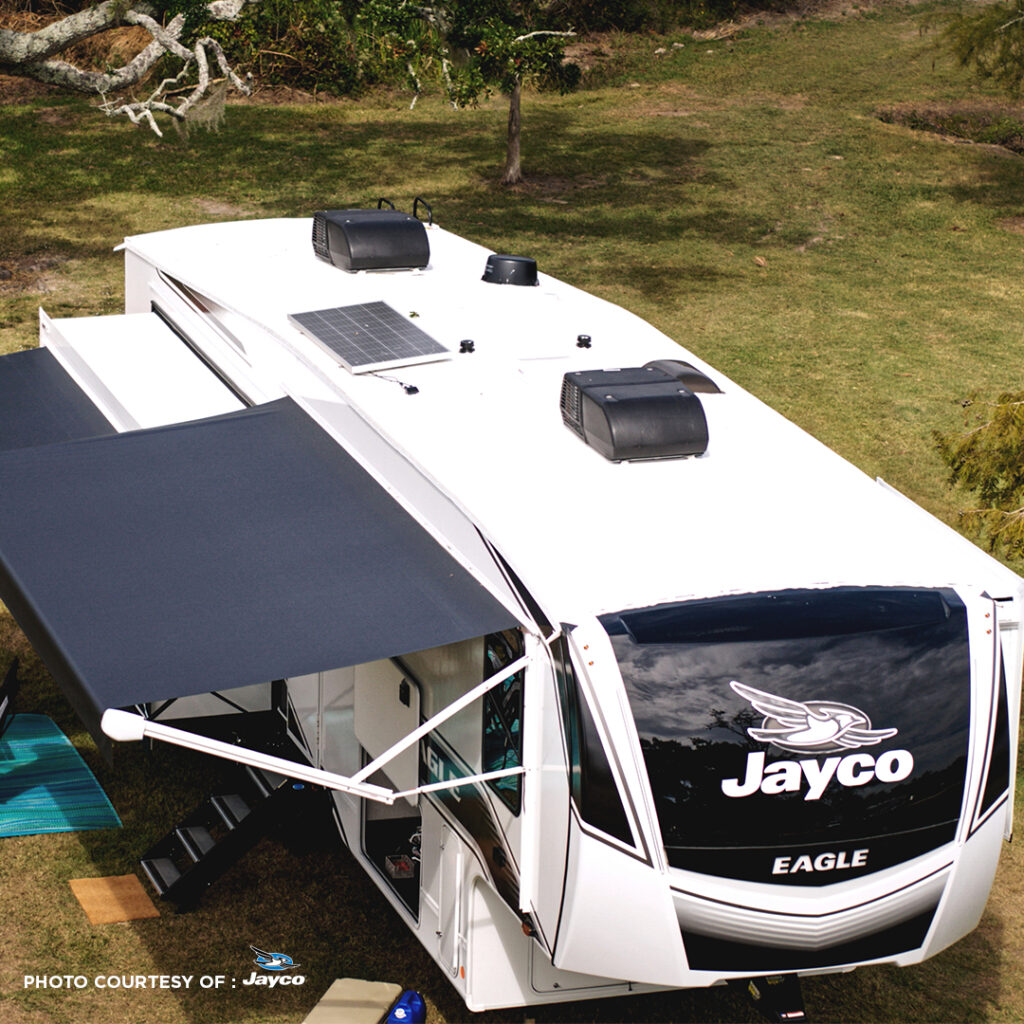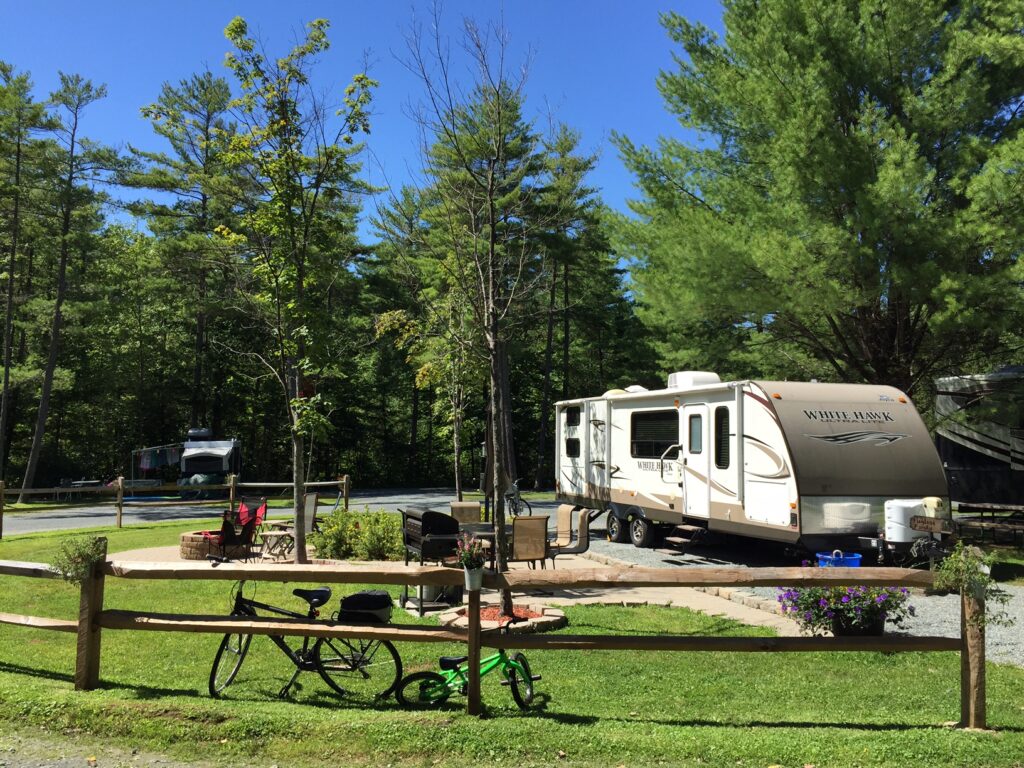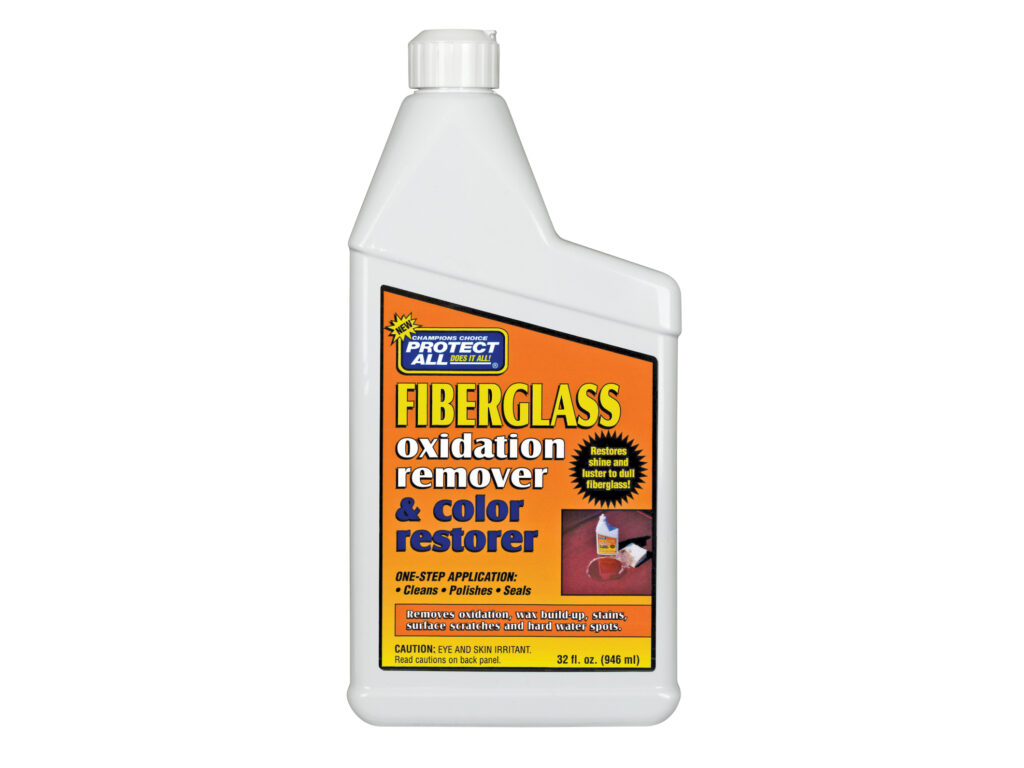Preventive maintenance
Breaking the Mildew Square is the best measure of preventing the fungus growth. Since it is not feasible to physically dry your roof every time if gets wet from rain, morning dew or humidity, the next best method of breaking the Mildew Square is to eliminate spores, food and warmth, the other three essential needs of mold and mildew growth.
Keeping the EPDM rubber roof material as clean as possible will help to accomplish this. Start by thoroughly cleaning and treating your rubber roof three to four times a year with Protect All’s Rubber Roof Cleaner and Rubber Roof Treatment.
In addition to helping to retard the chalking process described earlier in this article, Protect All Rubber Roof Treatment aids in keeping dust, pollen and other airborne contaminates that settle on the roof, from sticking to the rubber surface. Then, every week or two, you should sweep the roof free of all residue that has settled on the roof. This process will temporarily eliminate the spores, food and the dusty environment that captures moistures and feeds the growth and accumulation of mold and mildew.
As the roof continues to accumulate air-born contaminates, the Mildew Square again begins to develop, so frequent sweeping is important for effective preventative maintenance. How often you need to sweep off your roof will be dictated by both your seasonal and living environment such as exposure to moisture from rain, morning dew, fog and snow and airborne contaminates such as dust, sand, trees, smog and even your proximity to freeway traffic and airports that emit large amounts of pollutants.
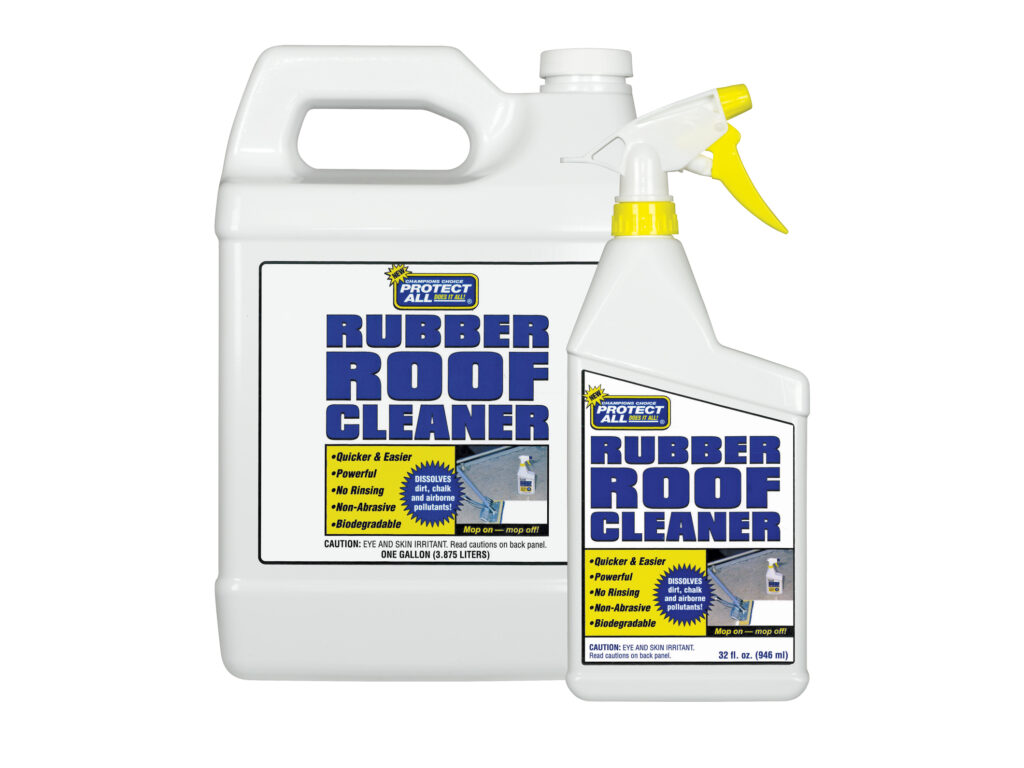
Rubber Roof Cleaner
Removes oxidation, tree sap, bird droppings, and more
SKU: 67032; 67128
Petroleum-free cleaner designed for RPDM and TPO rubber roofs, won’t crack or damage the surfaces. Removes oxidation and tough stains from rubber, fiberglass, and aluminum roofs.
Preventive maintenance
Rinsing the residue off the roof with water is not recommended for two reasons; moisture is one of the four elements required to establish the mildew square and the dirty water will create additional clean-up of the sidewalls and windows of your RV. Sweeping regularly is less time consuming and requires less effort than washing your roof and your RV.
It is important to note that although the dark spotting is unsightly, the growth and spread of mold and mildew does not harm the integrity of the roof. A side benefit of keeping your rubber roof clean will be the reduction, or if you are really diligent, elimination of, the dreaded black streaks!
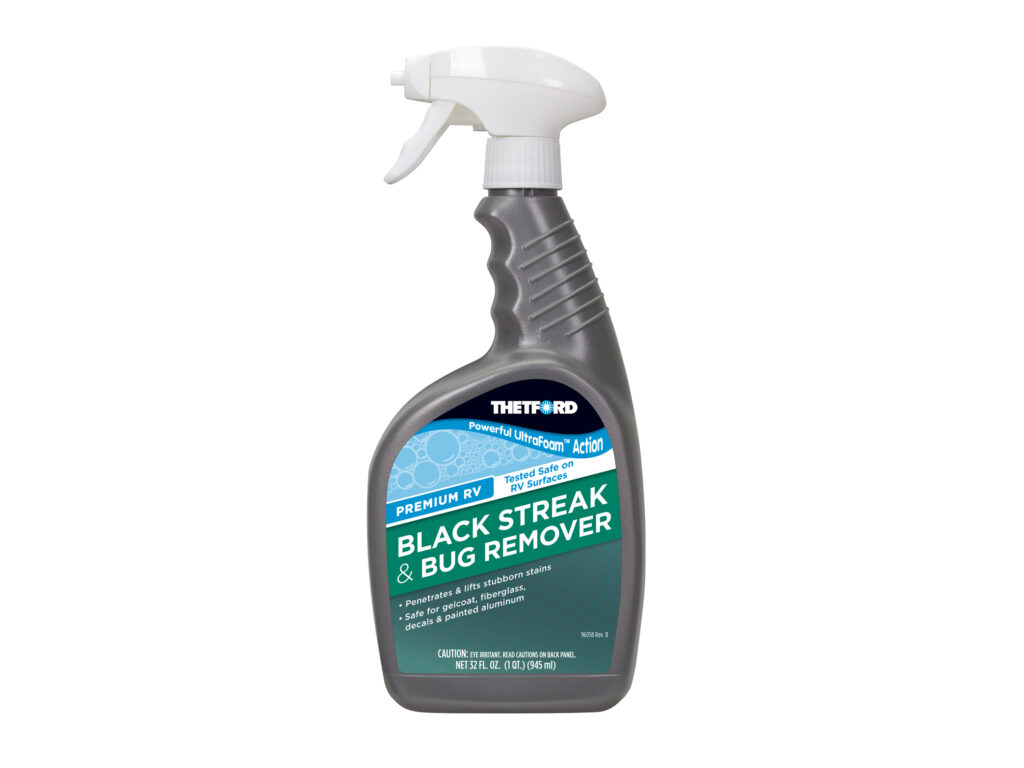
UltraFoam® Black Streak & Bug Remover
Black streak, bugs, and tough stains cleaner, safe on car paint and fiberglass
SKU: 32816
Safe on gel-coats, fiberglass, and painted aluminum, the foaming cleaner works on cars, RVs, motorcycles, trucks, and boats to remove black streaks, bugs, and other tough stains.
